Defining CD8+ T cells that provide the proliferative burst after PD-1 therapy
- PMID: 27501248
- PMCID: PMC5297183
- DOI: 10.1038/nature19330
Defining CD8+ T cells that provide the proliferative burst after PD-1 therapy
Abstract
Chronic viral infections are characterized by a state of CD8+ T-cell dysfunction that is associated with expression of the programmed cell death 1 (PD-1) inhibitory receptor. A better understanding of the mechanisms that regulate CD8+ T-cell responses during chronic infection is required to improve immunotherapies that restore function in exhausted CD8+ T cells. Here we identify a population of virus-specific CD8+ T cells that proliferate after blockade of the PD-1 inhibitory pathway in mice chronically infected with lymphocytic choriomeningitis virus (LCMV). These LCMV-specific CD8+ T cells expressed the PD-1 inhibitory receptor, but also expressed several costimulatory molecules such as ICOS and CD28. This CD8+ T-cell subset was characterized by a unique gene signature that was related to that of CD4+ T follicular helper (TFH) cells, CD8+ T cell memory precursors and haematopoietic stem cell progenitors, but that was distinct from that of CD4+ TH1 cells and CD8+ terminal effectors. This CD8+ T-cell population was found only in lymphoid tissues and resided predominantly in the T-cell zones along with naive CD8+ T cells. These PD-1+CD8+ T cells resembled stem cells during chronic LCMV infection, undergoing self-renewal and also differentiating into the terminally exhausted CD8+ T cells that were present in both lymphoid and non-lymphoid tissues. The proliferative burst after PD-1 blockade came almost exclusively from this CD8+ T-cell subset. Notably, the transcription factor TCF1 had a cell-intrinsic and essential role in the generation of this CD8+ T-cell subset. These findings provide a better understanding of T-cell exhaustion and have implications in the optimization of PD-1-directed immunotherapy in chronic infections and cancer.
Figures





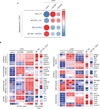

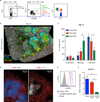
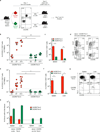
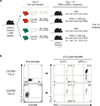
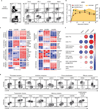
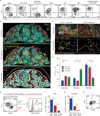


Comment in
-
Immunology: Cytotoxic T cells that escape exhaustion.Nature. 2016 Sep 15;537(7620):312-314. doi: 10.1038/nature19428. Epub 2016 Aug 24. Nature. 2016. PMID: 27556942 No abstract available.
References
References for methods
-
- Murali-Krishna K, et al. Counting antigen-specific CD8 T cells: a reevaluation of bystander activation during viral infection. Immunity. 1998;8:177–187. - PubMed
MeSH terms
Substances
Grants and funding
LinkOut - more resources
Full Text Sources
Other Literature Sources
Molecular Biology Databases
Research Materials
Miscellaneous

